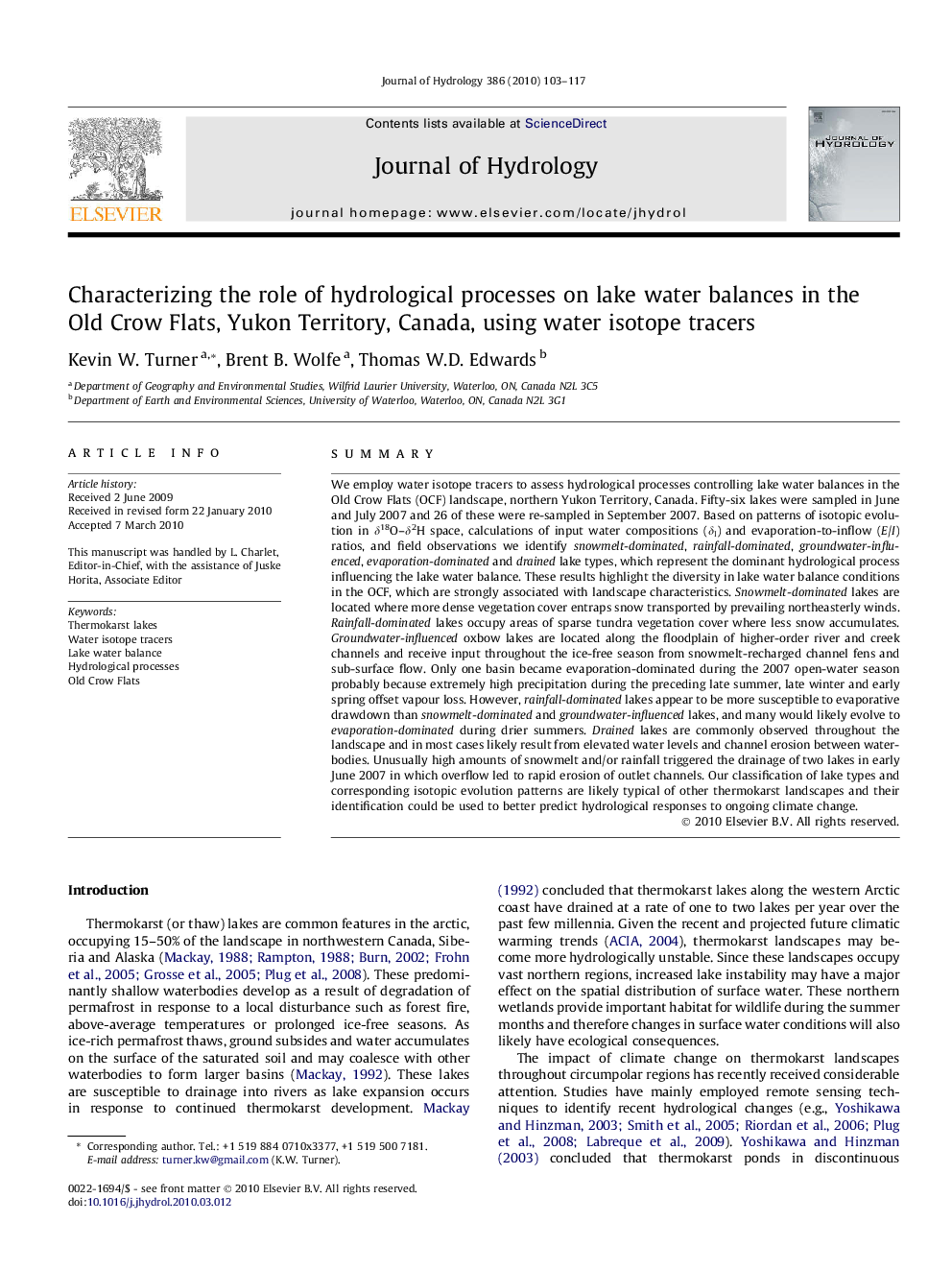| Article ID | Journal | Published Year | Pages | File Type |
|---|---|---|---|---|
| 4578217 | Journal of Hydrology | 2010 | 15 Pages |
SummaryWe employ water isotope tracers to assess hydrological processes controlling lake water balances in the Old Crow Flats (OCF) landscape, northern Yukon Territory, Canada. Fifty-six lakes were sampled in June and July 2007 and 26 of these were re-sampled in September 2007. Based on patterns of isotopic evolution in δ18O–δ2H space, calculations of input water compositions (δI) and evaporation-to-inflow (E/I) ratios, and field observations we identify snowmelt-dominated, rainfall-dominated, groundwater-influenced, evaporation-dominated and drained lake types, which represent the dominant hydrological process influencing the lake water balance. These results highlight the diversity in lake water balance conditions in the OCF, which are strongly associated with landscape characteristics. Snowmelt-dominated lakes are located where more dense vegetation cover entraps snow transported by prevailing northeasterly winds. Rainfall-dominated lakes occupy areas of sparse tundra vegetation cover where less snow accumulates. Groundwater-influenced oxbow lakes are located along the floodplain of higher-order river and creek channels and receive input throughout the ice-free season from snowmelt-recharged channel fens and sub-surface flow. Only one basin became evaporation-dominated during the 2007 open-water season probably because extremely high precipitation during the preceding late summer, late winter and early spring offset vapour loss. However, rainfall-dominated lakes appear to be more susceptible to evaporative drawdown than snowmelt-dominated and groundwater-influenced lakes, and many would likely evolve to evaporation-dominated during drier summers. Drained lakes are commonly observed throughout the landscape and in most cases likely result from elevated water levels and channel erosion between waterbodies. Unusually high amounts of snowmelt and/or rainfall triggered the drainage of two lakes in early June 2007 in which overflow led to rapid erosion of outlet channels. Our classification of lake types and corresponding isotopic evolution patterns are likely typical of other thermokarst landscapes and their identification could be used to better predict hydrological responses to ongoing climate change.
